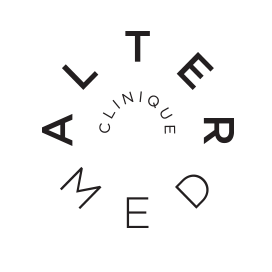
What are Trigger Points?
Trigger points are hyperirritable spots that can be found in any skeletal muscles in the body. These points can be palpated in tight bands of muscles and can irradiate pain in predictable patterns. This is known as Trigger point referral patterns.
Due to this reffered pain, people can often have their pain misdiagnosed or treated with little to no success.
Ex : John enters the clinic with pain in the glut, down the side and posterior leg, sometimes around the knee and into the calf.
This pain pattern is shared with sciatica and trigger points found in the Glut Med.
Trigger points can be active or latent. Trigger points which are active cause local and/or irradiated pain, whereas latent trigger points are only painful when palpated but are not yet painful or irradiating. Latent trigger points are always at risk of becoming active.
Do I have Trigger points?
Generally, most people have trigger points, if not active, latent. Trigger points can be activated by a number of factors :
-
Acute or chronic muscles overload
-
Being activated by another trigger point
-
Disease
-
Homeostatic imbalances
-
Direct trauma to the region
-
Accident trauma (such as a car accident during which many muscles are overly stretched)
Due to the nature of many jobs, which require to be seated for 8 hours of the day, bad posture, inactivity etc., muscle imbalances are becoming more and more prevelant. This sate of muscle imbalance is often the perfect environment for trigger points to form and become active.
How are trigger points are treated?
Direct ischemic pressure, combined with active and passive stretching techniques, and local heat to encourage circulation, is an effective approach to treat trigger points.
Very rarely will I treat a client and not come across at least a few trigger points. While trigger point work can sometimes be painful, most clients describe it as a ''hurts so good'' or a ''good pain'' and return asking specifically for that.
What can I expect when I get a treatment?
At the clinique Altermed, a typical trigger point treatment with my approach would start with a client assessment. This would help me identify the problematic areas and where potential trigger points will need to be worked on.
Once assessed, you would get onto the massage table in the same way you would for a massage. Trigger point work can be done over clothing, but it is more effective to work directly on the skin. I will often combine deep tissue massage, myofascial release, hydrotherapy (moist heat pack) and propose stretching techniques to complement working on trigger points.
Once the treatment portion is completed, I will demonstrate what stretches should be performed and at what frequency they should be done to help prevent any trigger point from returning.
A trigger point treatment can in some cases cause muscle soreness (similar to working out at the gym), which can last anywhere from 24-72 hours and can often require multiple treatments to obtain the best results.
For more information please contact Daniel Godin at Clinique Altermed.


